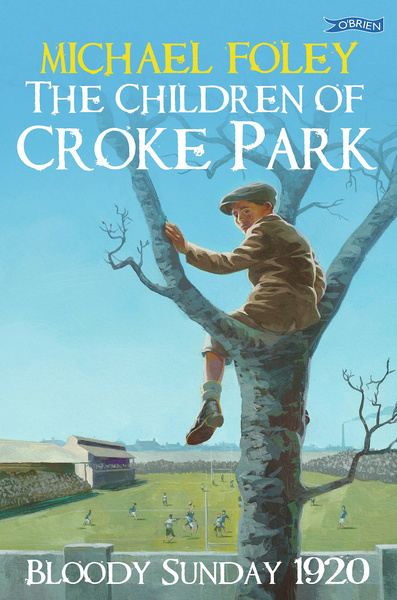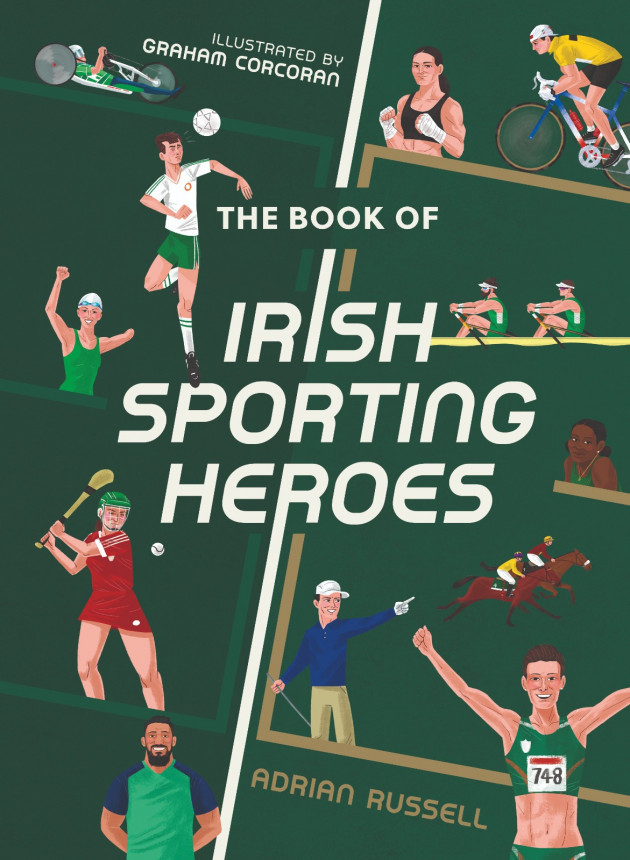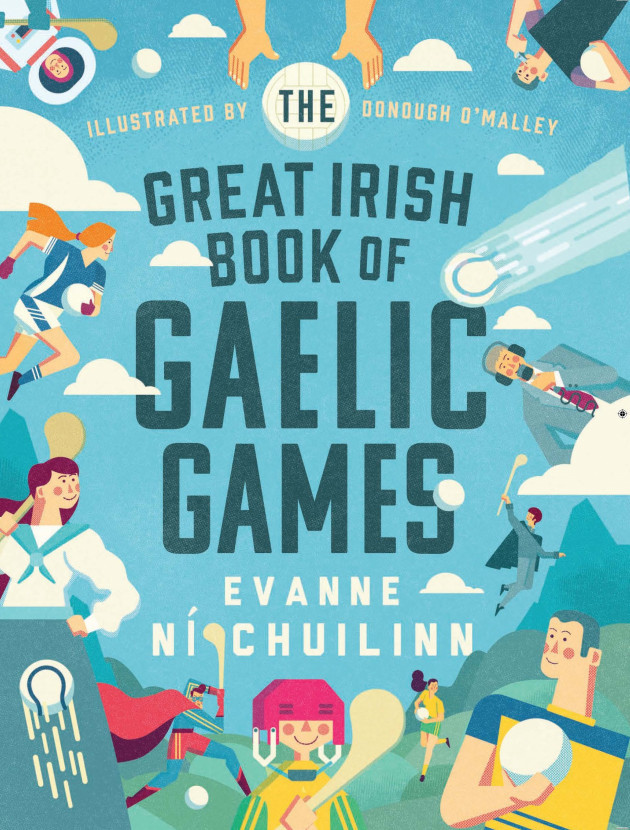THE CHILDREN WHO were victims of Bloody Sunday, a history of Gaelic Games, and an exploration of Ireland’s greatest sporting heroes – these are the subjects that are covered in three sports books that are aimed at young readers this Christmas.
Two of the books tell stories through a combination of text and striking artwork, while the third deals with the tragic events that unfolded when British forces opened fire during a match in Croke Park on 21 November, 1920.
The 42 speaks to the authors of each of the books, their motivation for their projects and the challenges they encountered during the writing process.
The Children of Croke Park: Bloody Sunday 1920 – Michael Foley
Michael Foley of The Sunday Times had most of the research for this book already completed before he began putting the pages together. In 2014, he published ‘The Bloodied Field’ which explores the events of Bloody Sunday on a broader scale. For ‘The Children of Croke Park,’ he was able to consider the three children among the 14 victims who were killed in the atrocity: William ‘Perry’ Robinson, Jerome O’Leary and John William Scott.
“I probably didn’t think I had the craft to do a children’s book so when it came to doing it, one of the best bits of advice I got was that you have to be cognisant of the fact that you are writing for children,” Foley explains.
“But, equally, don’t sugar coat it. Don’t treat them like ‘children.’ You can find a way to convey difficult concepts and scenarios without patronising them. I didn’t see that as a challenge, I saw it as an inspiration actually.
“Someone told me that the book was being used in some cases where parents have lost children. The book is being used to start conversations about loss. I was trying to get my head around that because I never thought it could help people in that way. It’s helping people through grief which is something I’ll never forget. Even if it’s just one family, it means a lot.”
Foley uses first-person and third-person narratives to distinguish each child’s story. Much of the book is based on factual accounts along with some fictional dialogue in a lively writing style to connect the reader with each of the boys. Foley also includes the recollections of Charlie Daly, who was a friend of one of those children. Charlie also attended the fateful match between Tipperary and Dublin with John William Scott, and was fortunate to survive. In the book, he’s reliving the events of that day as an old man.
“If you did it all from the third person,” says Foley, “there was a possibility that the reader might get mixed up between Billy, Perry and Jerome. Even the names are similar so I thought one in the first person, one in the third person and then another one as a mix. I wanted to have someone 60 or 70 years later looking back to explain the context of it as well in terms of how Bloody Sunday went down.”
The Book Of Irish Sporting Heroes – Adrian Russell
Adrian Russell, digital sports editor of the Irish Examiner and formerly of The 42 parish, was watching the Late Late Toy Show a few weeks ago when his book made a surprise appearance. He hoped ‘The Book of Irish Sporting Heroes’ might be featured at some stage in the programme, and was thrilled to see a young boy called Stevie offer a review of it before performing a passionate rendition of ‘Ireland’s Call.’
The book contains a thorough overview of Ireland’s greatest athletes across a variety of sports. Russell’s words are assisted by the vivid illustrations provided by Graham Corcoran to strengthen the catalogue of Irish sporting achievements.
“My phone lit up and it was just one of those moments,” Russell says.
“I heard from people I hadn’t heard from in a long time so you get a small grasp of the scale and reach of it. Even since then, when my friends bring kids to the house, they say, ‘Oh that’s the book from the Toy Show.’ It’s a huge platform for any book.”
Russell first began thinking of writing such a book during the days of the Covid pandemic. He reached out to publishers with the idea, and eventually, his project began to take shape. His two daughters were a solid sounding board for feedback, and the response to the final product has been encouraging so far.
Dealing with such a vast amount of material, however, forced Russell to make difficult calls on what to include and what to omit.
“There was so much there and you want to get so much of it and then it’s a case of paring back the research in an interesting way. How you get it done is the hard part. You’re trying to represent a balanced story so there were hard decisions.
“People seem to really enjoy it. I was that kid growing up who was a sponge for sport. This isn’t going to be an encyclopedia but they might read about something they didn’t know about. There’s a Bloody Sunday section and then they might go and read the Michael Foley book which is more in depth.
The Great Irish Book Of Gaelic Games – Evanne Ní Chuilinn
Unlike Russell, RTÉ sports Evanne Ní Chuillinn chose to hone in on one sport in her book by collating all the cornerstone aspects of Gaelic Games. When the publishers, Gill Books, first proposed the idea to her, she said she would only agree to write it if she had permission to examine more than just the sports of Gaelic football, hurling, camogie, handball and rounders. The culture, the Irish language connection, the history and even details about governance are captured between the covers.
“I wanted to show people what goes on behind the scenes because people are really nosy and interested about that stuff,” Ní Chuilinn explains.
“The link to the Irish language was really important to me and I wanted to make sure that was represented. And there was lots of things I had to cut out. I wanted to include Rolls of Honour for all the various inter-county titles that were won. But where do you draw the line?
“It ended up being that I didn’t have the time or the space to include that stuff. And they didn’t really want to date the book. They didn’t want to have All-Ireland titles up to 2023 and then become dated in 2024. I did wait until late July before updating the Gearóid Hegarty piece because Limerick won another All-Ireland.”
The illustrations in this book are by Donough O’Malley, who doesn’t come from sporting background but who still delivered with his brilliant artistic interpretation of Ní Chuilinn’s vision.
“He did a super job and I only met him once at the launch.
“There was so much planning and the planning took longer than the writing. I’ve had an idea for a children’s sports books for about eight years. But a lot of the books have been autobiographical or factual.
“I didn’t really back myself, and now that I’ve done one, I just feel a little more confident that I’d be able to do in my mind what I want to do.”
Follow the links below to purchase a copy of the books
The Children of Croke Park: Bloody Sunday 1920
The Book Of Irish Sporting Heroes
The Great Irish Book Of Gaelic Games
The42 is on Instagram! Tap the button below on your phone to follow us!




